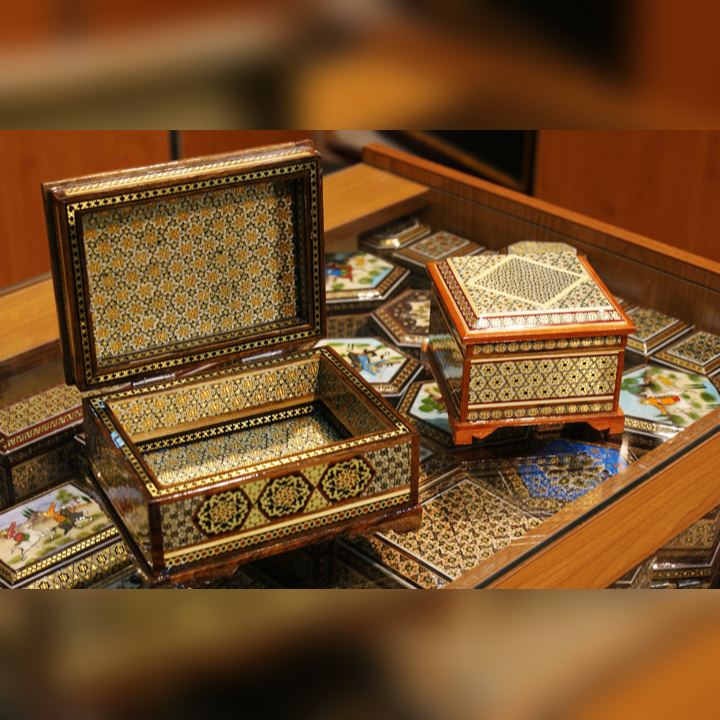Shop by Craft Art
Discover Masterpieces Created by Skilled Artisans
Discover Masterpieces Created by Skilled Artisans
Find the Perfect Item Based on Your Needs and Preferences

Page Contents
Khatam Kari is a marquetry art in Persian, standing for the rich cultural and artistic heritage of the country of Iran, dating several centuries. It is made up of very small-sized pieces of geometric shapes in wood, bone, ivory, and metal. This work is a model of skill, patience, and precision that characterizes Persian craftsmen. Whichever form it takes, whether as an item of home decoration, furniture, or tiny boxes and picture frames, it reflects the beauty and intricacy of Persian craftsmanship.
The origin of the art of inlay goes back to the Safavid dynasty (1501–1736), dating between 1501 and 1736, which is also a period considered as the climax for the Persian art and culture. However, during the Safavid empire, this fine art found its place as the center in Isfahan, and the tradition flowed through successive generations. In earlier times, royal families ordered this work to be done to decorate palaces and mosques and is considered a revered part of Persian art today.
There are fine materials that work together to produce such a marquetry: wood, walnut, and ebony, ivory, bone, and brass. These are cut in minute, precise pieces and set into an intricate arrangement of geometric shapes, such as stars and hexagons. These beautiful designs are inlaid down to cover various objects, from furniture to even the tiniest decoration. This work can take from a few weeks up to months, depending on the size and intricacy of the work.
This ancient craftsmanship has been given new life in even the most modern of applications. Artisans continue to create traditional chess boards, jewelry boxes, and frames but are also experimenting with new designs for innovative contemporary interior decor. Nowadays, the look of this art shows up on furniture, wall panels, and even in sumptuous home accessories, blended from Persian artistic heritage to appeal to modern tastes and preferences.
For the last few years, Persian inlay jewelry has gained significant momentum by reflecting into a wearable form of the trade’s cautious art. Rings, earrings, and pendants with delicate geometric designs have become modern-day collectors’ and fashion lovers’ items of desire. Therefore, people can carry a small part of the Persian culture wherever they go.
While this is a highly valued cultural art, it too does face the challenges of the modern world. Globalization and mass production have made the economy of artisans more difficult since handmade crafts are in lower demand. However, in order to preserve this tradition, the Iranian Cultural Heritage, Handicrafts, and Tourism Organization is endorsing this craft at both the local and international levels. This ancient art has been developed based on UNESCO’s recognition of the art as part of Iran’s intangible cultural heritage, and it has grown the awareness and interest in this ancient craft.
It is beyond a decorative art; it reflects the rich history of culture and the devotion of craftsmen to this work, which has been maintained from generation to generation. Finding modern uses and receiving global interest, it continues to impress new generations of artists and collectors alike. Its timeless beauty, incredible detail, and historical significance seal its status as one of the most treasured Persian handicrafts.
Your Information is Safe and Secure
Handmade with Care and Precision
We're Here to Help Anytime.
Fast and Reliable Shipping
Handcrafted by Skilled Iranian Artists
Or